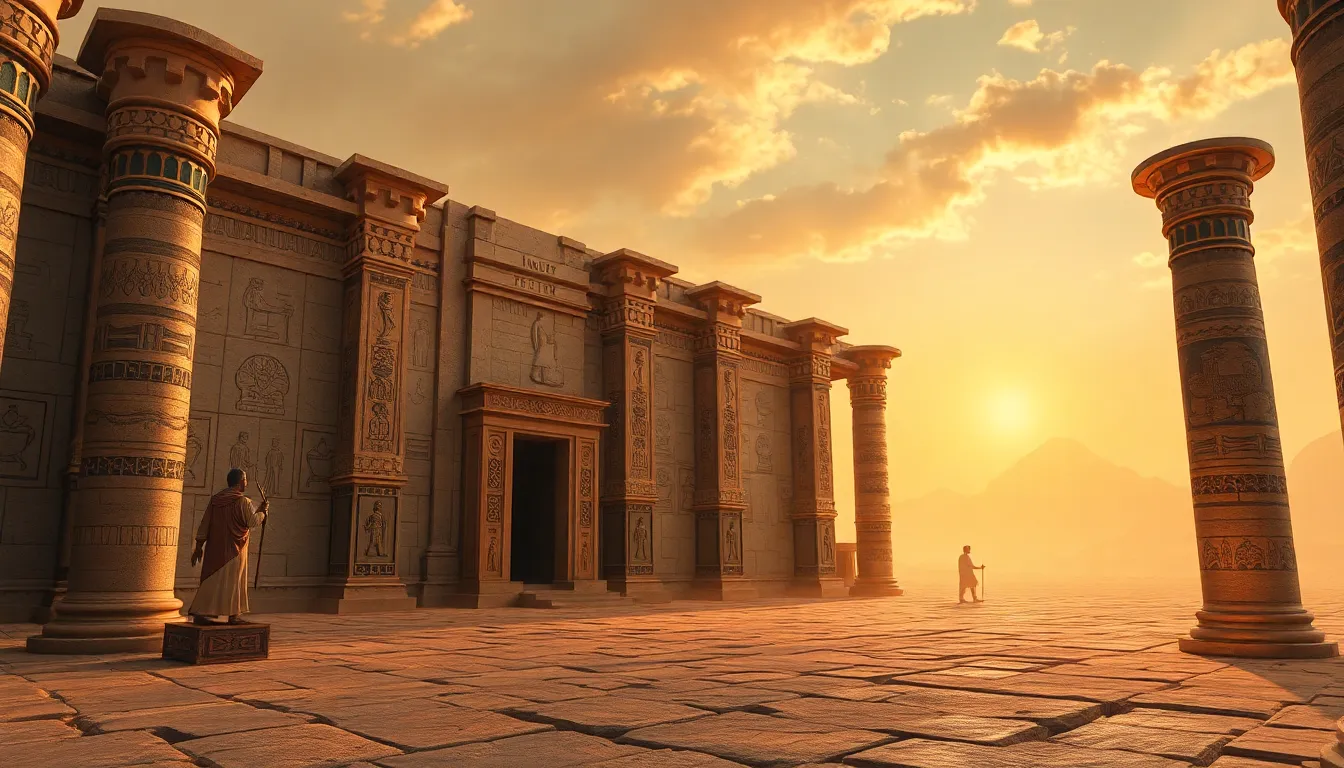The Process of Creating a Sacred Space in Ancient Egypt
I. Introduction
Sacred spaces have held profound significance across ancient cultures, serving as focal points for worship, ritual, and community gatherings. In ancient Egypt, these spaces were not merely physical locations; they were deeply intertwined with the spiritual and cultural identity of the society.
The importance of sacred spaces in Ancient Egyptian society cannot be overstated. They were integral to religious practices, acting as conduits between the mortal realm and the divine. This article will explore the multifaceted process of creating these sacred spaces, delving into their historical context, architectural design, rituals, and lasting legacy.
II. Historical Context
Ancient Egyptian religion was characterized by a rich tapestry of beliefs, gods, and mythologies that shaped their worldview. The Egyptians believed in an afterlife where the soul would continue to exist, leading to a strong emphasis on creating spaces that facilitated communication with the divine.
Throughout different dynasties, the evolution of sacred spaces reflected shifts in religious practices and architectural advancements. From the early mastabas to the grand temples of the New Kingdom, each era contributed unique elements that enriched the sacred landscape.
The significance of these spaces extended beyond the earthly realm; they were seen as vital for the journey into the afterlife. Sacred spaces provided a connection to the gods and aided in the rituals necessary for securing a favorable afterlife.
III. Site Selection and Geography
The selection of a location for a sacred space was a meticulous process, guided by various criteria:
- Proximity to the Nile River, which was considered a source of life and fertility.
- Natural features such as mountains, which were often viewed as sacred.
- Celestial alignments that were believed to enhance the spiritual significance of the site.
Notable sacred sites such as Karnak and Luxor Temple exemplify the geographical significance attributed to these locations. Positioned along the Nile and aligned with celestial bodies, these sites were designed to resonate with both earthly and cosmic energies.
IV. Architectural Design and Symbolism
The architectural design of sacred spaces in ancient Egypt was rich with symbolism, reflecting the civilization’s beliefs and values. Key architectural elements included:
- Pylons: Monumental gateways that symbolized the transition from the earthly to the divine.
- Courtyards: Open spaces for communal gathering and rituals.
- Sacred shrines: Enclosed areas housing statues of deities, representing the divine presence.
The layout of these spaces often mirrored Egyptian cosmology, with designs that represented the cosmos and the divine order. For instance, the alignment of temples with cardinal points and the incorporation of sacred geometry were prevalent throughout their architecture.
V. Rituals and Ceremonies in Sacred Spaces
Rituals and ceremonies played a crucial role in the functioning of sacred spaces. Daily rituals, performed by priests, were essential for maintaining the relationship between the gods and the people. These included:
- Offering of food and incense to the deities.
- Purification rituals to cleanse the space and participants.
- Recitation of prayers and hymns to invoke divine presence.
Major festivals, such as the Opet Festival, served as communal gatherings that brought people together to celebrate and reaffirm their faith. The involvement of priests and priestesses was pivotal; they not only conducted rituals but also acted as intermediaries between the divine and the community.
VI. Materials and Construction Techniques
The construction of sacred spaces utilized a variety of materials, each chosen for its symbolic and practical significance:
- Stone: Often limestone and sandstone were used for durability and strength.
- Wood: Employed for decorative elements and smaller structures.
- Plaster: Used for coating walls and creating detailed reliefs.
Traditional building methods included the use of simple tools and techniques, such as:
- Lever and pulley systems to lift heavy stones.
- Simple scaffolding for access to elevated areas.
- Measurements based on the human body to achieve proportionate designs.
Over different periods, innovations in construction techniques emerged, allowing for grander and more complex structures that reflected the evolving religious and cultural landscape.
VII. Preservation and Transformation of Sacred Spaces
Preservation of sacred spaces has always been a challenge, influenced by various factors including:
- Natural erosion and weathering.
- Human activity, such as urban development and tourism.
- Political changes leading to neglect or repurposing of sites.
Throughout history, many sacred spaces have undergone transformation, impacting their original designs. Despite this, modern-day reverence for these sites has led to archaeological efforts aimed at restoration and preservation, ensuring that their significance is not lost to time.
VIII. Conclusion
The significance of sacred spaces in ancient Egyptian culture is a testament to the civilization’s complex relationship with the divine. These spaces served not only as places of worship but also as embodiments of their beliefs, values, and hopes for the afterlife.
The legacy of these sacred spaces continues to influence contemporary understandings of spirituality and sacredness. As modern practices evolve, the principles underlying the creation of sacred spaces in ancient Egypt can provide valuable insights into the importance of intentionality and connection in our own spiritual environments.
In conclusion, the process of creating sacred spaces in ancient Egypt reflects a rich cultural heritage that has shaped the spiritual landscape for millennia, leaving a lasting impact on both historical and modern practices.




